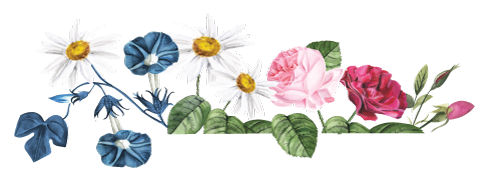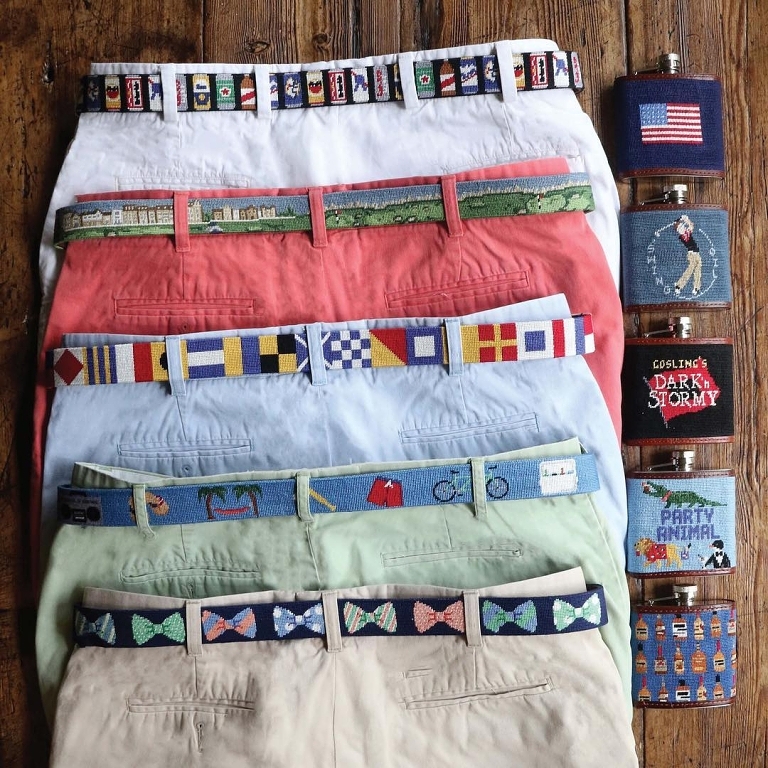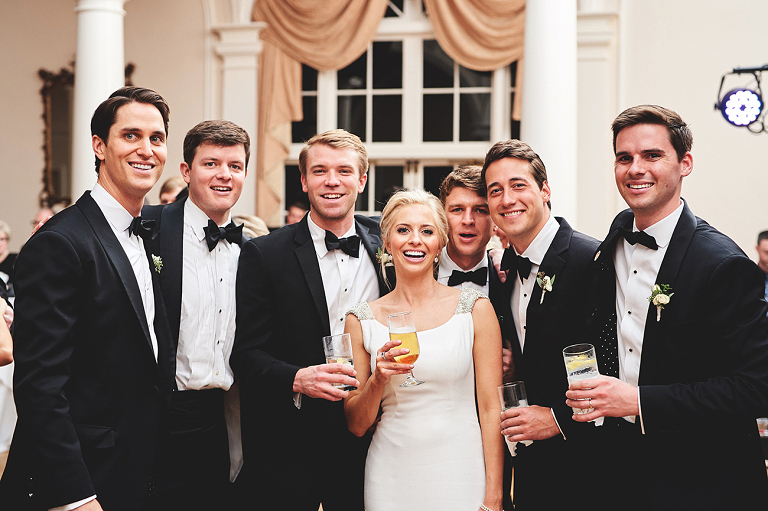Few things are as exciting as receiving a beautiful and thoughtfully designed invitation in the mail: the weight of the paper, the loops of the calligraphy—all of these special elements combine to evoke the formality of eras past. When starting to build your own invitation suite, it can feel overwhelming; with so many different directions to go in, how do you get started? Below, top calligraphers, stationers, and artists divulge their favorite memories and best tips on how to create a unique invitation suite for your own wedding.
Start with the Basics
If you’re not an inherently creative person, it can be difficult to articulate exactly what it is that you’re looking for in your invitation suite. Providing details about the event for your calligrapher and stationer can be the perfect starting point to help pique both of your imaginations.
“The stationery is the first thing that guests see that has anything to do with the event, so it’s important that it sets the correct tone. I always tell people, if you don’t know what you want you’re in the right place—because the beauty of custom design is seeing lots of options in front of you. Your gut will tell you what you’re drawn to,” says Emily Hostetler, founder of Greenwich, CT based Paper Moss.
Stephanie Fishwick, artist, illustrator and calligrapher to the fashion set (including Moda Operandi’s Lauren Santo Domingo), agrees.
“Often I find that ninety percent of the brides that I work with say that they don’t want their invitation to look like anything else they’ve seen or anything else I’ve ever done. While knowing what you don’t like is helpful, I always ask brides to show me examples in my portfolio that they like, too. I try to suss out where their hopes are going and narrow down the options to help guide them to one vision. It’s rare to get someone who knows exactly what they want, so it’s a collaborative brainstorming process.”
Ultimately, though, the suite should reflect your tastes, interests and aesthetics as a couple. “Above all it must be beautiful and emotional,” says Bernard Maisner, master calligrapher and bespoke luxury stationer. “An invitation set is not about sharing information; it is about sharing emotions.”
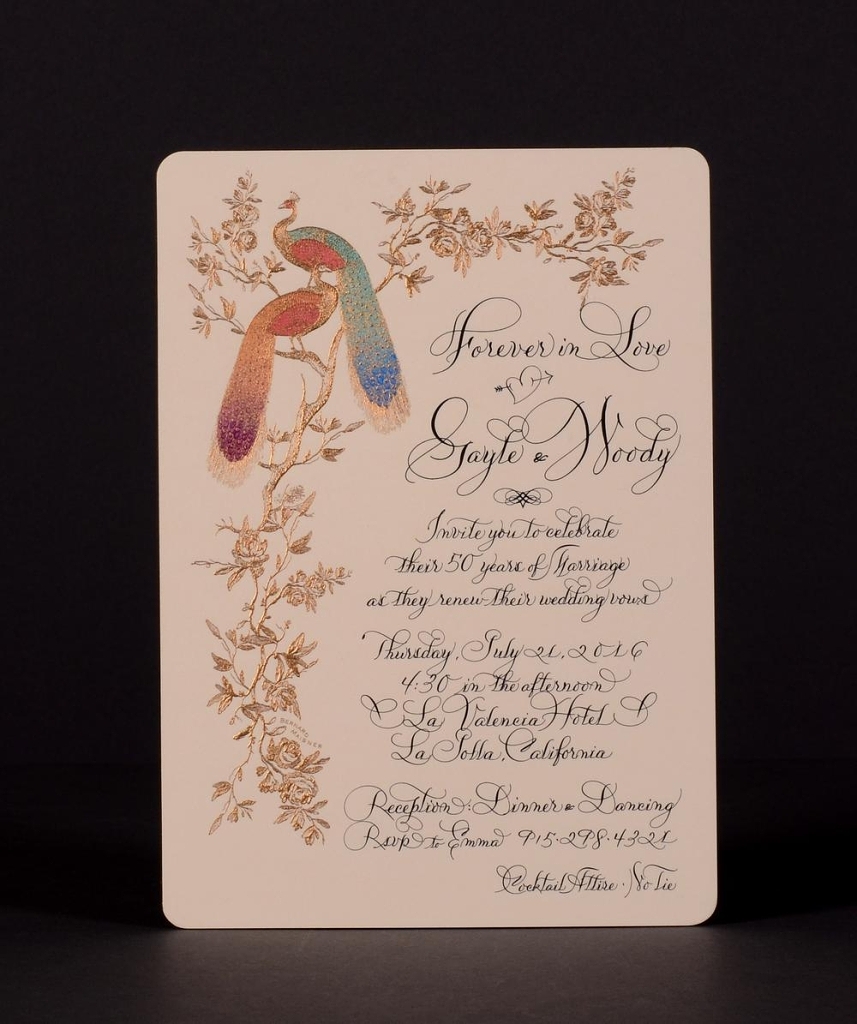
Branding Is Important
With wedding hashtags and geotags becoming more and more ubiquitous, wedding crests have become a classic, old school way to express personalization. With so many different customization options, it can feel overwhelming at first. How to decide what images represent you best?
“A custom monogram is a great way to brand the couple, and it is something that can be used throughout all of their wedding stationery,” says Hostetler. “If budget allows, go custom for everything—otherwise you can use the monogram on future pieces like the menu, thank you cards, etc. If you’re not a monogram person, even just a small motif that can be placed as a divider between wording, and later turned into a pattern for the back of the menu or on a cocktail napkin is a nice touch.”
As you start to think through what pieces will be included in your suite, let your stationer know what the climate, vegetation, flora, fauna and time of year the wedding will be taking place in. “With that information, I can build out an appropriate ode to the information in a mood board,” says Fishwick.
“I try to let the location, style of the couple, and an appropriate interpretation of the information guide my process. The invitation—and the wedding, really—shouldn’t be a crazy circus that you throw everything at; rather, it should be a celebration of love and people should feel that love and feel taken care of for the weekend.”
Highlighting common interests for the couple is also a great starting point. “In our design process, we talk a lot about the couple—how they met, what they do for a living, what they like to do together, what the wedding venue is like, etc. That information usually spurs some ideas. For example, we had a couple once where the groom was a professional fisherman and the bride was an artist, so their monogram included a fish and a hand drawn bird because their wedding venue was near a bird sanctuary,” says Hostetler.
Any iconography included in the suite is a reflection of you—so the options are endless. Hone in on what really represents you as a couple, and feel free to get creative. “Imagery [that I’ve created] has been as traditional as a beautiful two-letter monogram or as wild and diverse as incorporating a drawing of a couple made by the bride when she was 6 years old, a wheat stalk recreated from a 150 year old menu from the bride’s great-grandmother’s personal stationery found during a visit to France, or creating tea-stained paper for a couple renewing vows after 40 years of marriage, showing aging and representing the passage of time,” says Maisner.
“The goal is always to reflect the mood and desires that best represent the couple—a paper experience that accurately shows their personalities and sets the tone for their upcoming special day,” he adds.
Create a Timeline and Stick to It
Be sure to get started on the invitation suite early, as custom pieces can take a while. “The budget determines what you can and can’t do, and timing also is a big factor. Based on when brides approach me and when they want their invitations sent out, that is how I am able discern how much we can accomplish together. Crests, watercolors and anything hand done are really a commissioned piece of artwork—so the process naturally takes a lot longer than picking something out of a book at a stationery store,” says Fishwick.
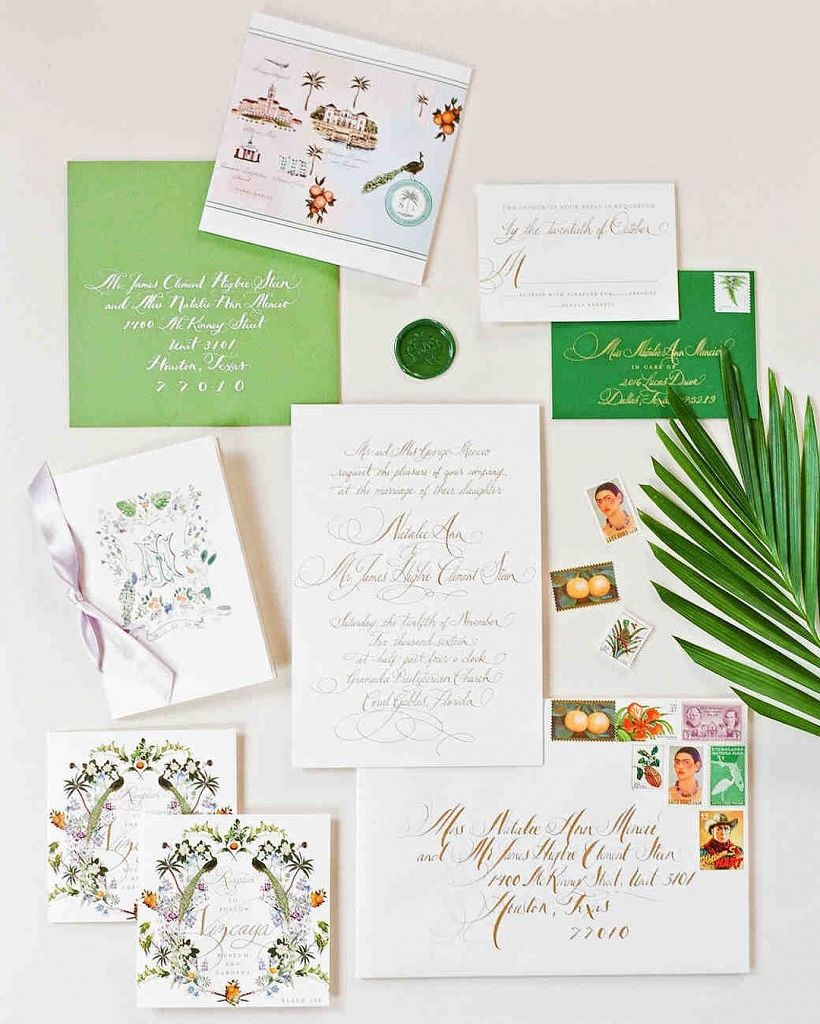
And if you haven’t finalized the flowers that will be on the tables or the exact flow of the evening when you begin your talks with the stationer, fret not.
“A lot of times, when you’re beginning the invitation process, you haven’t finalized the overall aesthetic and details of the wedding. And that’s okay! For someone who doesn’t know what they’re looking for, you just have to have a sense for the feeling of the event to get started,” Fishwick explains.
One point to note is that the invitation language can change as you go through the design rounds. “For example, if you’re having a long weekend celebration, and you realize halfway through planning that not that many people will be attending the welcome dinner on Thursday evening, you might end up not reserving a venue for that location and doing something a bit less formal. The final numbers definitely inform the process,” says Fishwick.
Tradition: To Buck or To Follow?
When it comes to wording, the Emily Posts of the world have quite a few opinions on how an invitation should be phrased, but not every aspect of the wedding process has to be taken so seriously. “We always try to stay close to etiquette, but there is so much more flexibility today that couples can have some fun with it, too,” says Hostetler. “I love when RSVP wording is creative. Instead of saying, ‘Accepts with pleasure’/‘Declines with Regret’, you can have fun with something like, ‘Count us in for the celebration!’, or, ‘Sad to miss but sending our love!’
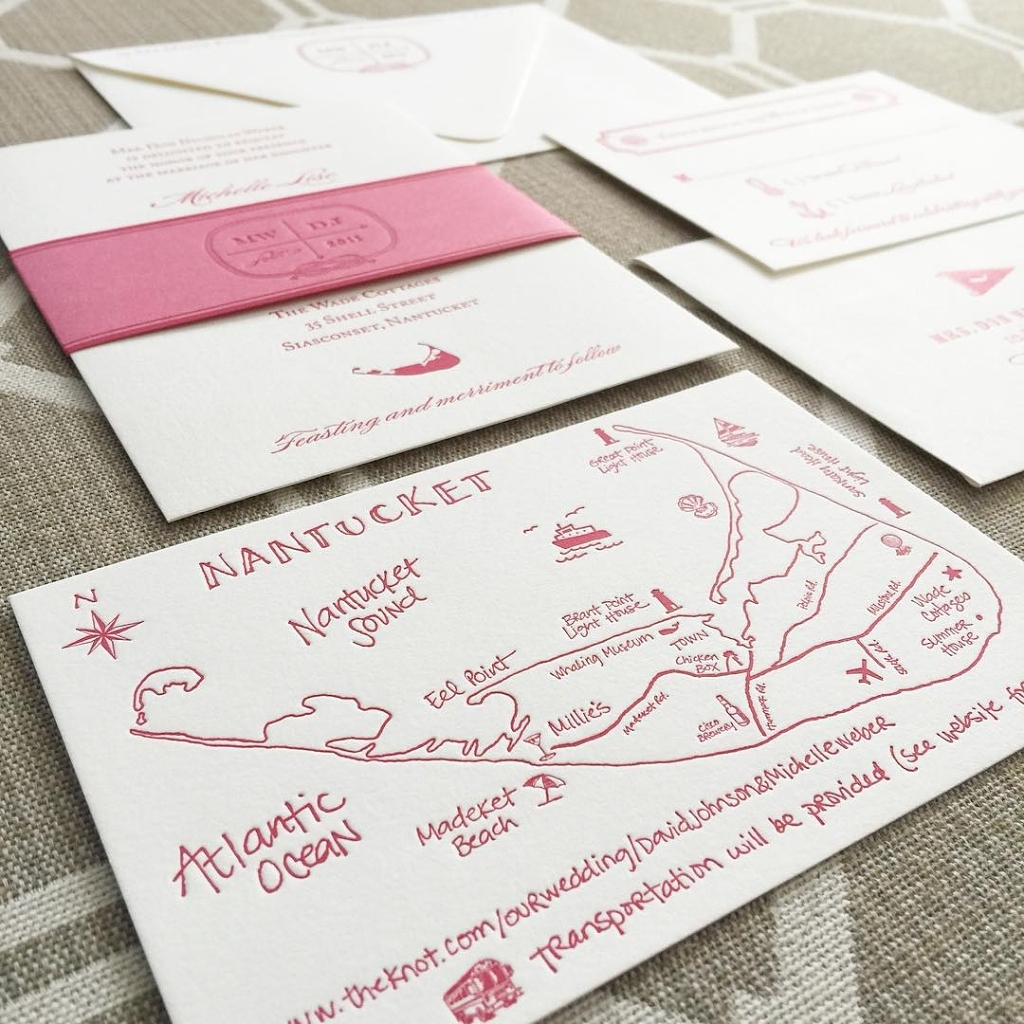
With that being said, wording an invitation is a process steeped in tradition. “There are small etiquette tips, such as how to differentiate between getting married in a church versus outside of a church, what names to use in which order, and when to include the reception. However, we always tell our couples that it’s most important to consider family members and culture,” recommends artist and bespoke stationer Ceci Johnson of Ceci New York.
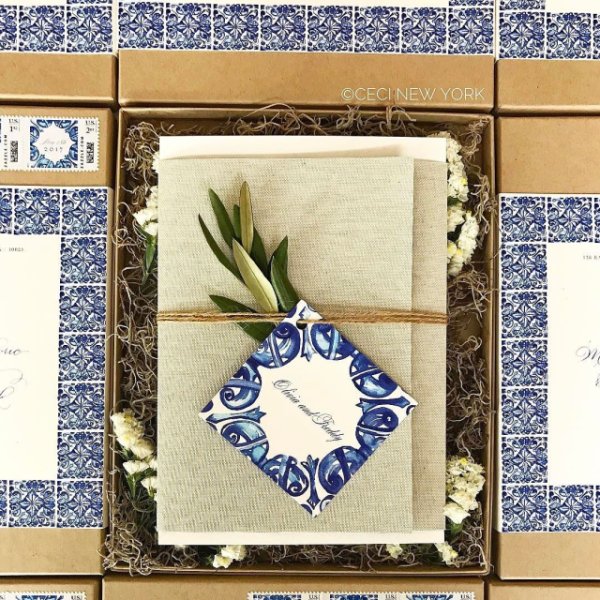
“Even though it is the couple’s special day, the wedding is often viewed as a representation of the respective families and cultures. Different cultures and members of the family honor certain time-valued traditions when it comes to what needs to be included on a wedding invitation. Everyone values certain elements differently, so our one piece of advice would be to check with your family on what elements they deem important to be represent,” says Johnson.
Find Your Own Style
When designing an invitation suite, many brides are inspired by Pinterest and wedding magazines, but have a hard time translating that inspiration into something unique to the couple themselves. “I like to find out what they are drawn to and why,” Hostetler recommends.
“If a bride says she loves an existing invite because it has pretty florals in it, we then explore what her bouquet will have, or what florals will be around the venue. Then we talk about incorporating them to better reflect her event—e.g. if it’s a more rustic theme, we could have lavender sprigs painted in watercolor on the back as a pattern, and then tuck real lavender into the programs, for example.”

And don’t feel that any detail is too crazy to incorporate. “I think the suite I had the most fun making years ago was one of the first collage florals that I did for Lauren Santo Domingo,” Fishwick recalls. “It was for a Moda Operandi event, and it had jewels and bugs and all of these different unique elements pressed in. My favorite wedding suite that I worked on was for a client who got married at Versailles—she had me do a crest with beautiful botanicals and oranges, and it was jungle themed—there were no changes, and she let me do my own thing. That was a pretty great one!”
Written by: Ariel Feldman









